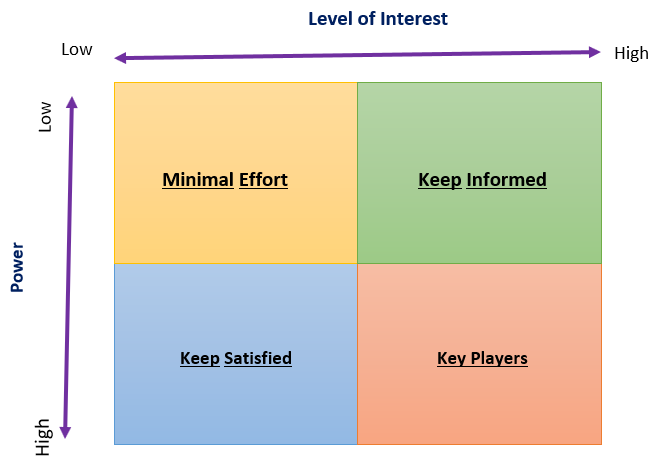Simply, stakeholders mean, an individual or groups who care about the business organization. So stakeholders are so important to every business organization. Every business organization should care about their stakeholders just because stakeholders and the business organization heavily depends on each other. In this article, we briefly describe some important terms about stakeholders, this includes the importance of stakeholders, some definitions about stakeholders, types of stakeholders, the objectives of stakeholders, their nature, and The Stakeholder mapping.
The importance of Stakeholders
Stakeholders are so powerful because they have the ability to influence business operations directly and indirectly. Stakeholders give impressive support to the business organization because they are interested in business activities. With caring, supportive stakeholders, an organization will be able to accomplish its goals and objectives as well as stakeholders’ expectations optimally. However, if the organization fails to accomplish stakeholders’ expectations, it may lead to ineffective performance, industrial/market failure, or even disaster. so there is considerable importance with stakeholders
Definition of Stakeholders
Stakeholders can be defined as an individual or group/institution that has an interest in the entity and have the ability to influence or be influenced by the entity. According to the Cambridge dictionary, a stakeholder means, a person such as a customer, employee, or a citizen who is elaborate with the organization, society, etc., and therefore has responsibilities towards it and curiosity in its success.
“individuals and groups who depend on an organization to fulfill their expectations and on whom in, turn the organization depends ”
(Capon, 2010)
“individuals and groups who have an innate interest in the business organization’s activities and who directly and indirectly influence or being affected by the organization’s purposes and strategies ”
(Johnson and scholes, 2014)
Types of stakeholders
Stakeholders can be categorized into four categories such as primary stakeholders, secondary stakeholders, internal stakeholders, and external stakeholders.
Primary stakeholders
Individuals and groups who are directly involved with the entity and very important for the entity. For instance, owners, managers, suppliers, investors employees, and business partners.
Secondary stakeholders
Secondary stakeholders mean individuals or groups who are do not involve with the entity directly and are not very essential for the entity. For instance, secondary stakeholders are trade associations, media, government institutes, finance institutions, and the general public.
Internal stakeholders
Internal stakeholders are individuals or groups that are internal to the organization such as employees, managers, owners, and directors.
External stakeholders
External stakeholders are individuals or groups that are external to the organization such as customers, suppliers, financial institutions, and government.
Stakeholder Objectives
Owners
- Profitability
- Liquidity
- Goodwill
- Longterm survival
Employees
- Higher salaries and wages
- Job satisfaction
- Job security
- Promotions
- Training and development programs
- Better working environment
Customers
- Quality products
- Fair prices
- Quality service
Government and public
- Legal conformity
- Environment protection
- CSR programs
- Employment creation
- Community development
Nature of stakeholders
- Interests of stakeholders are conflicting with each other
- Their interests are not always consistent
- Rewarded in different ways
- Differently influenced by every strategic decision.
- Some stakeholders act as blockers and some others act as facilitators
- So the business entities should address and assist their stakeholders differently by identifying and prioritizing key stakeholders by using stakeholder mapping
Stakeholder Mapping
Stakeholder mapping is a process that identifies and categorizes stakeholder expectations and power and also helps in understanding political priorities.
Stakeholder mapping emphasizes the importance of two issues, one is “How much interest each stakeholder has to influence on the organization’s expectations and specific strategies” and the other one is “whether stakeholders have the POWER to do so”
Stakeholder Mapping based on power and Interest

According to the above matrix, all the stakeholders can be categorized into four categories
- Stakeholders with High Power and High interest
- Stakeholders with High Power and Low interest
- Stakeholders with High interest and Low Power
- Stakeholders with Low interest and Low Power
Stakeholders with High Power and High interest
These stakeholders are the key players of stakeholders among the company, they have a high influence that affects the company’s business activities and they have a high interest in the company as well. Therefore, the company needs to fulfill all needs of these stakeholders.
Stakeholders with High Power and Low interest
These types of stakeholders have a high power to affect the company’s activities and have a low level of interest. However, when their level of interest is underrated, they will be key players. Therefore, the company needs to keep them satisfied
Stakeholders with High interest and Low Power
Employees and suppliers of this company are the stakeholders that have High interest and low power to influence this company. The company can keep informed these stakeholders just because they have some ability to affect the attitudes of Key players
Stakeholders with Low interest and Low Power
These types of stakeholders have low power and low interest to affect on company’s business activities. The business does minimal effort on these stakeholders.





